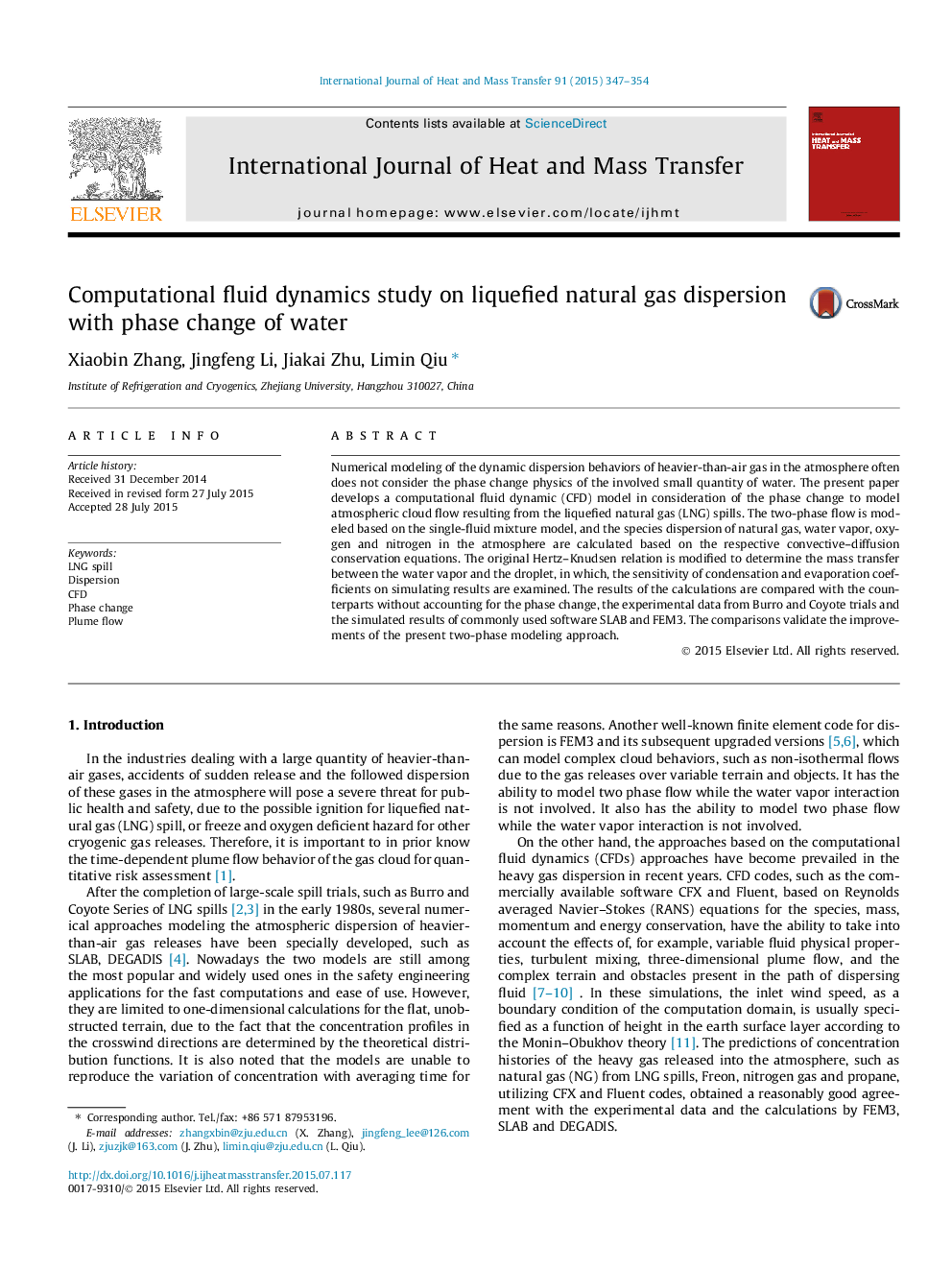| Article ID | Journal | Published Year | Pages | File Type |
|---|---|---|---|---|
| 7056184 | International Journal of Heat and Mass Transfer | 2015 | 8 Pages |
Abstract
Numerical modeling of the dynamic dispersion behaviors of heavier-than-air gas in the atmosphere often does not consider the phase change physics of the involved small quantity of water. The present paper develops a computational fluid dynamic (CFD) model in consideration of the phase change to model atmospheric cloud flow resulting from the liquefied natural gas (LNG) spills. The two-phase flow is modeled based on the single-fluid mixture model, and the species dispersion of natural gas, water vapor, oxygen and nitrogen in the atmosphere are calculated based on the respective convective-diffusion conservation equations. The original Hertz-Knudsen relation is modified to determine the mass transfer between the water vapor and the droplet, in which, the sensitivity of condensation and evaporation coefficients on simulating results are examined. The results of the calculations are compared with the counterparts without accounting for the phase change, the experimental data from Burro and Coyote trials and the simulated results of commonly used software SLAB and FEM3. The comparisons validate the improvements of the present two-phase modeling approach.
Keywords
Related Topics
Physical Sciences and Engineering
Chemical Engineering
Fluid Flow and Transfer Processes
Authors
Xiaobin Zhang, Jingfeng Li, Jiakai Zhu, Limin Qiu,
